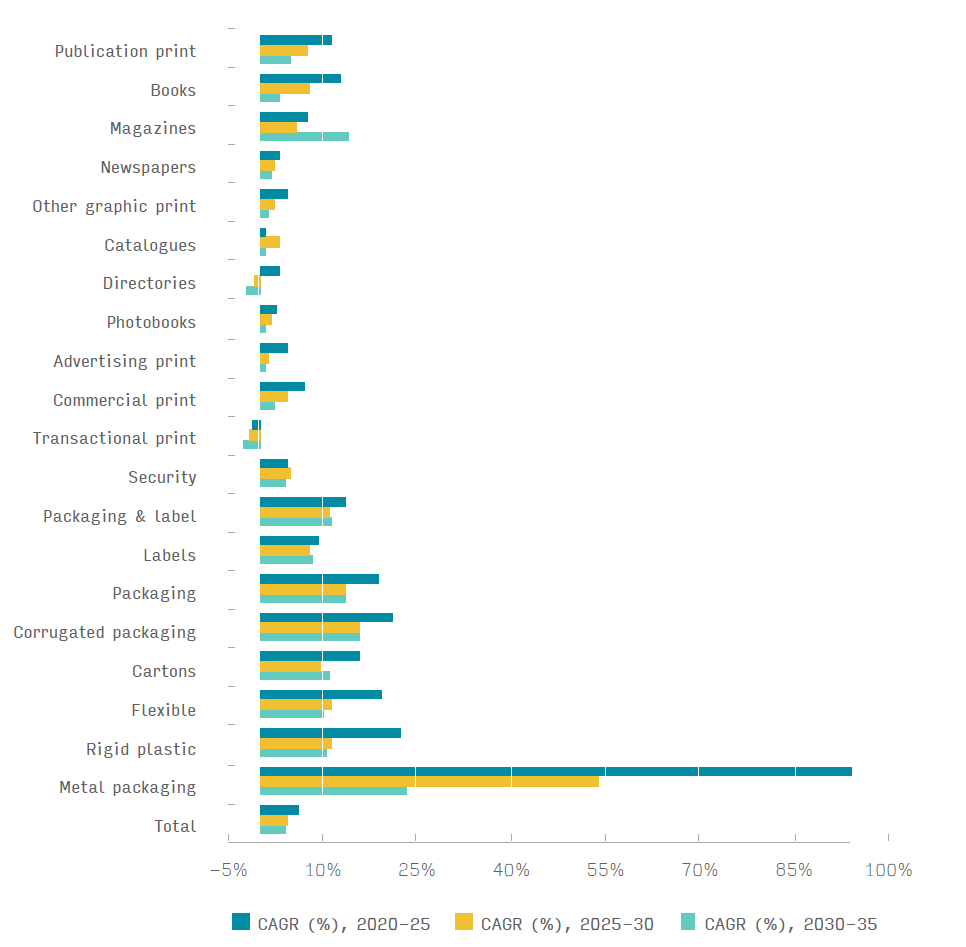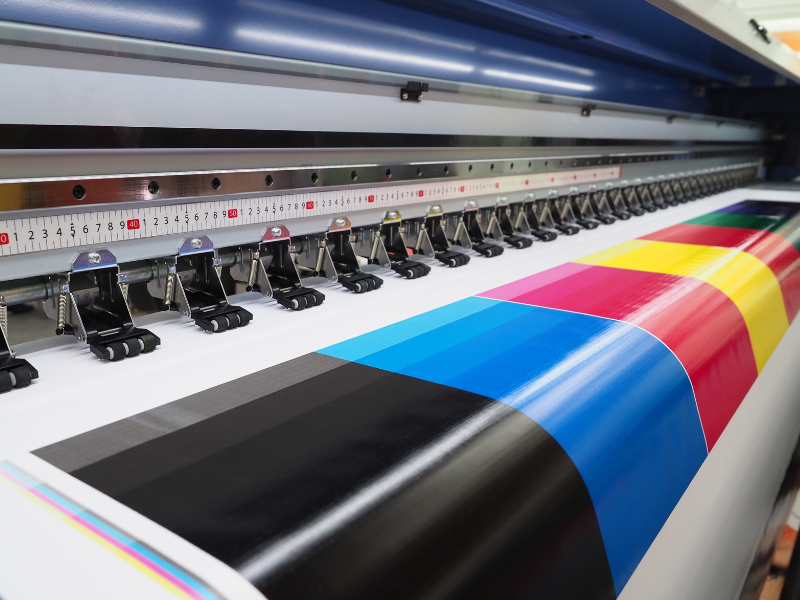The digital print market is worth $167.5 billion globally in 2025, according to the latest research from Smithers, the global authority on the printing industry.
Digital (inkjet and electrophotography) printing continues to create new value across graphics, publications, packaging and labels. These systems are now the focus for many OEMs paired with superior software platforms, better automation, and higher productivity.
A new Smithers market report
The Future of Digital Printing to 2035 forecasts value in the sector will increase to $251.1 billion in 2035, at constant pricing. The arrival of new higher throughput inkjet machinery, combined with changes in print buying, will see the volume of digitally printed media increase from 1.8 trillion A4 print equivalents to 2.8 trillion over the 10-year period. This is equivalent to a 54.3% increase in output.
The existing market will see 304,000 tons of ink and toner sold in 2025, generating revenue of $14.5 billion, alongside nearly $5.8 billion spent on new digital print machinery.
By 2035, Smithers predicts a new generation of digital print lines will be directly competitive with analogue in all sectors, except of low-value newspaper, magazine and graphics work, and the highest volume low-graphics packaging jobs. The highest growth rates will be in packaging, where digital is already well established in narrow-web; and is now gaining traction in corrugated, cartons, flexible packaging, rigid plastics and metal print.
The adoption of digital print will be boosted by further technical refinements, mainly for inkjet, as it displaces toner as the dominant process. The resolution of inkjet printheads will continue to improve, from 1,200dpi at 300m/per minute, up to 2,400dpi by 2030 and approaching 3,000dpi in 2035. Drop size will also improve – down to one picoliter – for high quality images, as well as much larger drops for white inks and decorative coatings.
Ink technology will also improve, with cheaper pigment ink formulations available for high-volume single-pass presses supplied in bulk. This will be supplemented by new opaque white, metallic effect, luminous, fluorescent, and specialist security inks.
These technology developments will steadily improve the cost position of digital print against analogue alternatives. By 2035, many buyers and producers of digital print and packaging are companies that do not exist in 2025. There will be acquisitions and mergers, with multiple new start-ups, some of which will grow to be major players over the next ten years.
Global digital print growth rates between 2020 and 2035, in print volume % CAGR
 Source: Smithers
Source: Smithers

